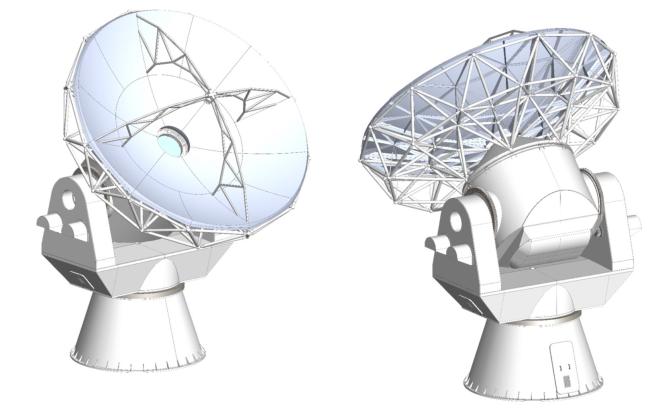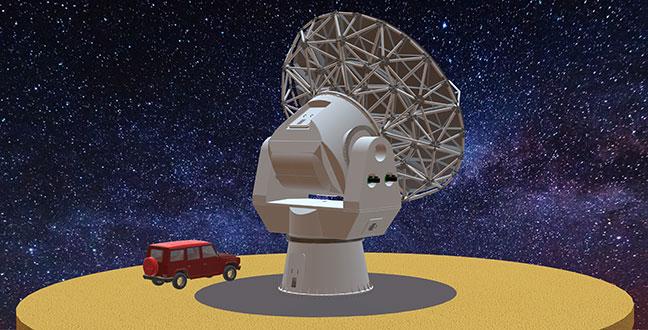
Artist's conception of future ngEHT antennas. mtex technology GmBH will design and construct these new antennas to expand and enhance the capabilities of the Event Horizon Telescope. Credit: mtex technology GmBH, Center for Astrophysics | Harvard & Smithsonian
The Smithsonian Astrophysical Observatory, part of the Center for Astrophysics | Harvard & Smithsonian (CfA), has selected a contractor to design, develop and build antennas for the Next Generation Event Horizon Telescope (ngEHT). CfA officials signed an agreement with mtex technology GmbH of Germany on August 10, 2023.
The ngEHT will expand the existing Event Horizon Telescope by adding many new antennas. The EHT currently links together 11 radio antennas around the world to study and image the environments around supermassive black holes (SMBHs). The project has already imaged two SMBHs, M87* in 2019 and Sgr A*— the SMBH at the heart of the Milky Way galaxy — in 2022. The addition of these new antennas promises to enable even sharper views of black holes, and the first movies.
"Supermassive black holes convert the energy of infalling matter to radiant light, and power near light-speed jets of charged particles that pierce entire galaxies. How this happens remains one of the greatest mysteries in astronomy," said Shep Doeleman, CfA astronomer and ngEHT project lead. "The ngEHT will capture the dynamics of black holes, letting us see them in action, and even provide new tests of Einstein's gravity. What we learn will have implications across the sciences."

An alternate artist's conception of future antennae of the next generation Event Horizon Telescope (ngEHT) from mtex. Credit: mtex technology GmBH, Center for Astrophysics | Harvard & Smithsonian
"The contract with mtex is planned in three phases," said Garret Fitzpatrick, ngEHT project engineer. "Already underway, the first phase will produce a mature design concept for future antennas, with detailed cost estimates. Additional options include the completion of the final design and the production of a prototype. The third and final phase will build and deliver new antennas to locations around the world."
"The ngEHT will be a truly unique instrument, and we are proud that our team was selected by CfA," said Lutz Stenvers, Managing Director of mtex antenna technology. "We are excited to contribute our extensive technical experience in telescope engineering to the ngEHT."
The ngEHT works by linking dishes across the globe to create a planet-sized virtual telescope. The larger a telescope, the smaller the objects it can observe on the sky, so the ngEHT when completed by the end of this decade will give us the sharpest images possible from the surface of the Earth.
"CfA's mission is to ask and answer big questions that advance our knowledge and understanding of the Universe, and finding new and better ways to study black holes is a part of that," said CfA Director Lisa Kewley. "Our goal is to enable the study of black holes and the impact they have on their surrounding environments through cinema. ngEHT is key in supporting this effort in the near-term and for years to come."
An mtex press release detailing the contract and its expected outcomes is available at: https://schauenburg-international.com/en/mtex-antenna-technology-selected-to-develop-new-telescope-to-capture-black-hole-movies/.
Related News
Can Cosmic Inflation be Ruled Out?
Astronomers May Have Discovered the First Planet Outside of Our Galaxy
Gravitational Self-Lensing of Massive Black Hole Binaries
Latest Results from Cosmic Microwave Background Measurements
"X-Ray Magnifying Glass" Enhances View of Distant Black Holes
Projects
AstroAI
GMACS
For Scientists